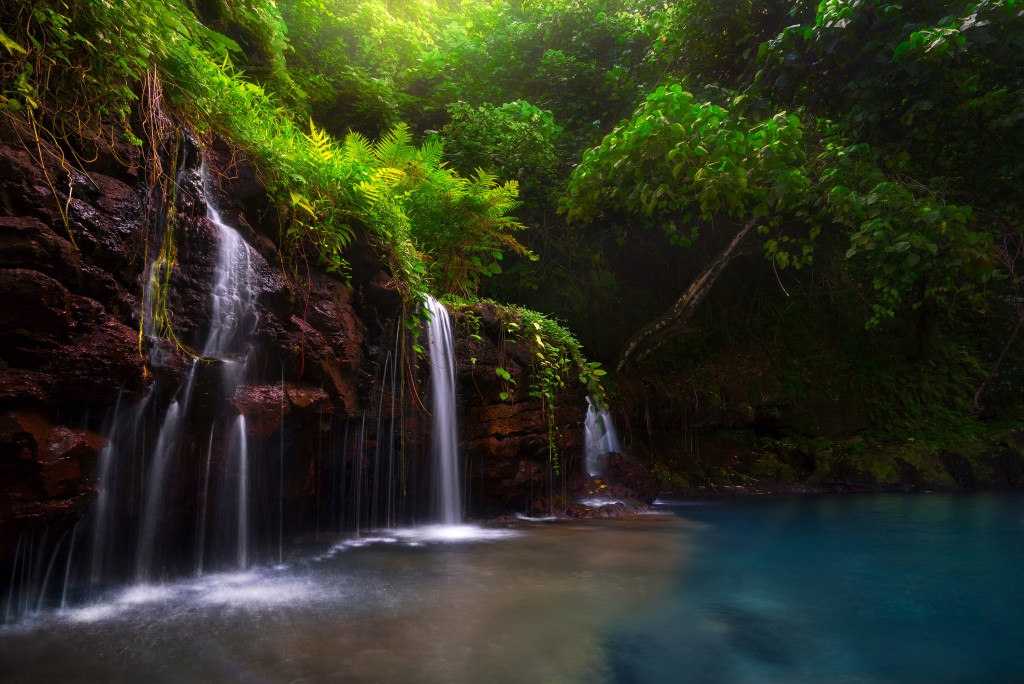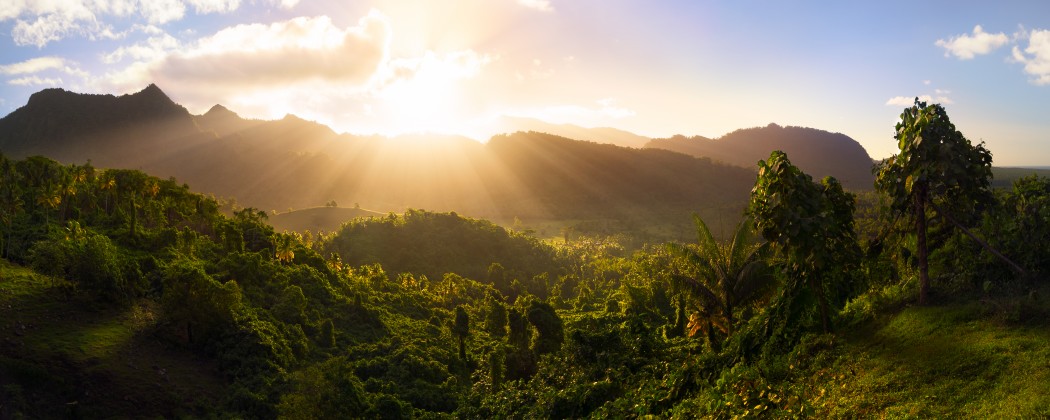I now know what dogs feel like when they pop their heads out the window of a moving vehicle, eyes squinting, tongues out, laughing without a sound. They look so pleased with themselves, as if holding a secret to which everyone else is oblivious. Right now, I would like to poke my tongue out too, just to see if it contributes to the overall effect: if not to add to the pleasure, at least to exhibit to the world what I am feeling. With my head lifted towards the heavens, I am experiencing the bliss that can only come from escaping to a tropical island, of which Samoa offers plenty.
Perhaps this sense of escapism is due to the isolation factor: the fact that we know there is a large body of water separating us from those large continents that breed our ‘developed’ worldviews as to what ‘civilisation’ looks like. An island has either broken away, somehow freeing itself of man’s shackles in the process, or risen from the sea of its own accord, starting anew; fresh clay ready to be sculpted.
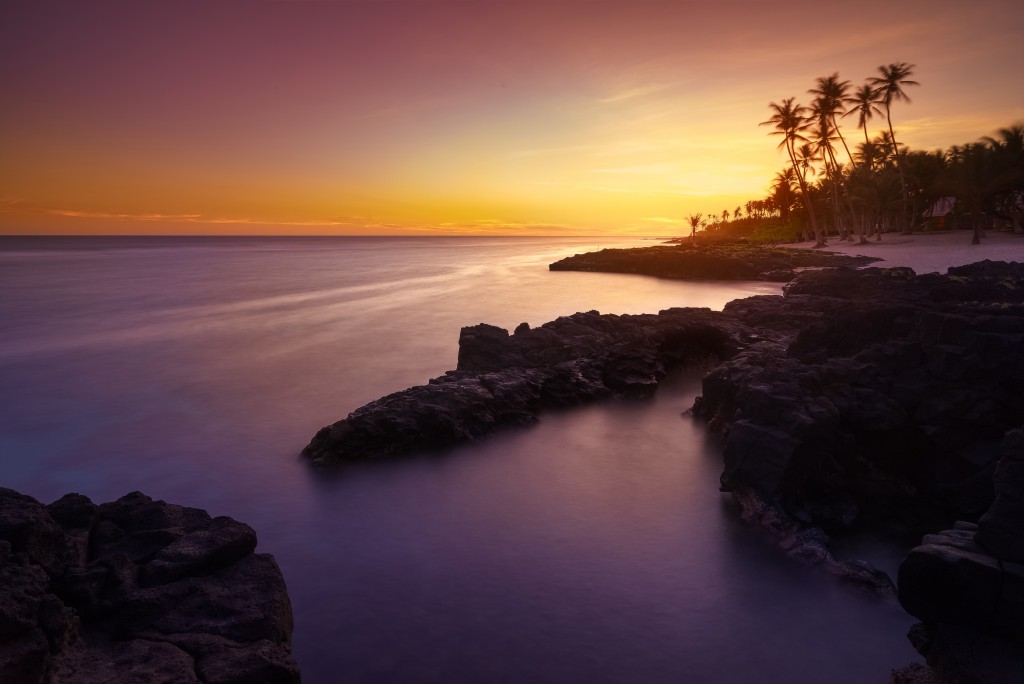
Enough daydreaming. I open my eyes, and I am greeted by the beginning of sunset unleashing a semicircle of magical rays that scatter across dense vegetation. I am on a natural high, sitting on the roof of our vehicle as it picks its way through unruly layers of lowland, mountain and cloud forest. I watch the dipping and rising of contours basking in the late afternoon sun.

The only man-made elements interrupting the wild terrain are the van and road beneath me. This is the type of natural vista one can expect in most of Samoa, with 80 per cent of the population living in rural coastal areas. Historically, the locals lived away from the sea due to the prevalence of cyclones and tsunamis. However, as tourism developed and resorts opened closer to the coast, job-seeking locals followed the bread.
The only form of truly urban development can be found in Apia, Samoa’s capital city. Apia sits on the central north coast of Upolu, one of the two main islands. Upolu hosts the bulk of the country’s population, with approximately 135,000 residents, while the larger island of Savai’i has over 43,000 and is also the fourth-largest island in Polynesia. The rest of the population is distributed across seven smaller islands, while two remain uninhabited.
Winding our way down the road through the mountainous, forested landscape, I cannot help but ponder the beauty of this almost untouched land, and whether it will remain this way. It is certainly a paradise for locals and visitors alike, but one that is slowly being ‘discovered’ by money-hungry developers. Caution must be taken so that Samoa does not end up as another Bali or Fiji — destinations that have been progressively destroyed by mass tourism.
However, my current investment in paradise is not that of a developer. Instead I am an explorer, spending my days navigating the islands of Upolu and Savai’i, where I find a jar of little delights. The layers of landscape that I view from on top of the van soon become layers of discovery on a micro level, in-depth and up close.
To Sua Ocean Trench is located in the village of Lotofaga, on the south coast of Upolu. Viewed from above, it looks like a big hole in the ground. There are actually two such holes here, created as a consequence of ancient volcanic eruptions. Only one of them gets any attention though, as it holds the picturesque waters in which we can swim. Ironically, the second hole is where the real magic lies. It is named To Le Sua, ‘without water’. Legend has it that the spirits who used to live in To Sua moved to sister hole To Le Sua when the ocean water came in. Thankfully, this allows visitors to float the aqua waters safe in the knowledge that there are no spirits taking a dip along with them.
Once I leave the protection of the viewing area and make my way down the steps into the sinkhole, its true depth sinks in. What was an awe-inspiring spectacle becomes more like the ‘hole of no return’. But braving the 30-metre-high wooden ladder allows us to play and swim freely in this crystal clear lagoon, in perfectly safe, tranquil water. The lagoon is connected to the ocean, only metres away, via an underwater passage, whence the tide comes in and out over the course of a day.
Floating on my back, gazing up, the cliffs surround me in every direction, making me feel like I am tucked far away in a hidden paradise. The surrounding areas feature lush gardens, complete with fales for rest and relaxation, and for viewing pleasure, a beach on the western side of the site puts on a wondrous sunset after our swim.
Beaches, sunsets, volcanoes, rainforests and waterfalls recur in scenes right out of Jurassic Park as we roam in our van. Most places we visit are hours away, so we spend a good deal of time in transit, enjoying looping around vast green landscapes sipping niu (young coconuts). There is plenty of entertainment along the way. Farm animals regularly cross our paths: pigs are followed by piglets; cows, calves and bulls stroll around without a care in the world.
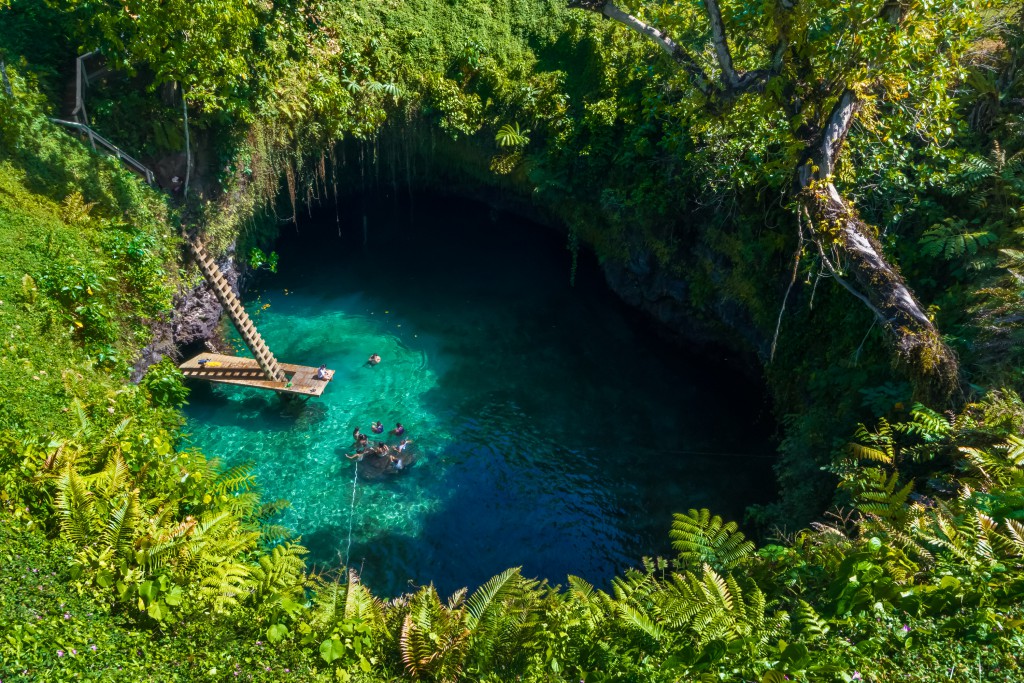
Several times, I manage to convince our guide, John, to stop along the way so that I can hang out with some of these carefree animals, hoping to have some of their relaxed nature rub off on me. On closer inspection, one of the bulls expresses an interest in charging at me, so I leave the dangerous acts to our photographer, Clint, who is all too happy to eye the bull back with his lens. Funnily enough, none of this seemingly local wildlife is local at all — it has in fact been introduced to the island, with some animals, like pigs, rats and cats, posing a risk to the Samoan ecosystem.
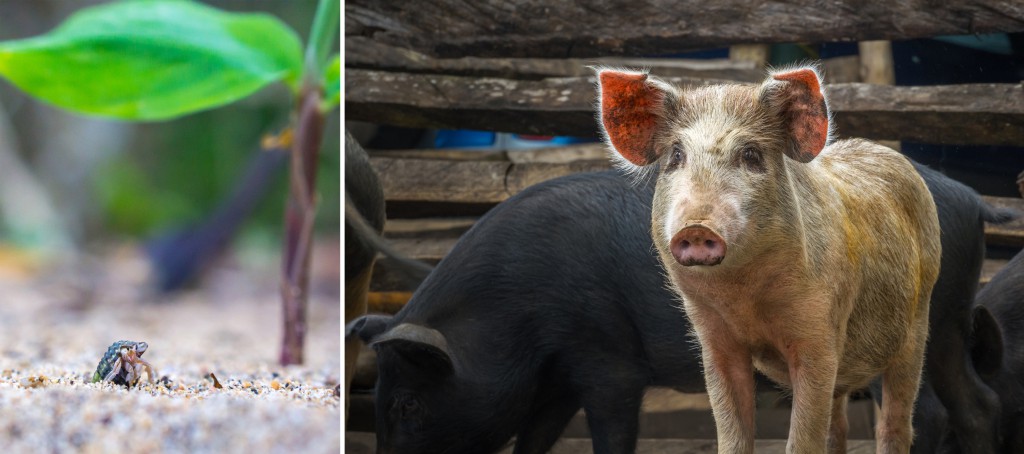
With anticipation, we hop onto a boat to the island of Savai’i, claimed by Samoans as the cradle of Polynesia. “You haven’t seen Samoa till you see Savai’i,” John tells us, and the excitement levels rise. The biggest of the nation’s islands, Savai’i’s central region comprises over 72,000 hectares of rainforest, forming the largest mass of undisturbed high-altitude forest in all of Polynesia. Hundreds of volcanic craters scatter this region, a reminder of the disruptions that gave rise to the wilderness we enjoy.
The greatest range of Samoa’s native flora and fauna is found here as well, making it an area of importance in terms of global conservation efforts. We experience the depths of this vast forest-scape in the low-lying tropical Falealupo Rainforest Reserve in the north-west of the island, where we climb to reach a canopy walk 40 metres above the ground, surrounded by giant banyan trees. It is a little daunting to walk across the shaky, swinging bridge, but when we make it to the viewing platform at the top, our bravery pays off. Switching from our micro explorations back to the macro view, all of Savai’i unfolds before us.
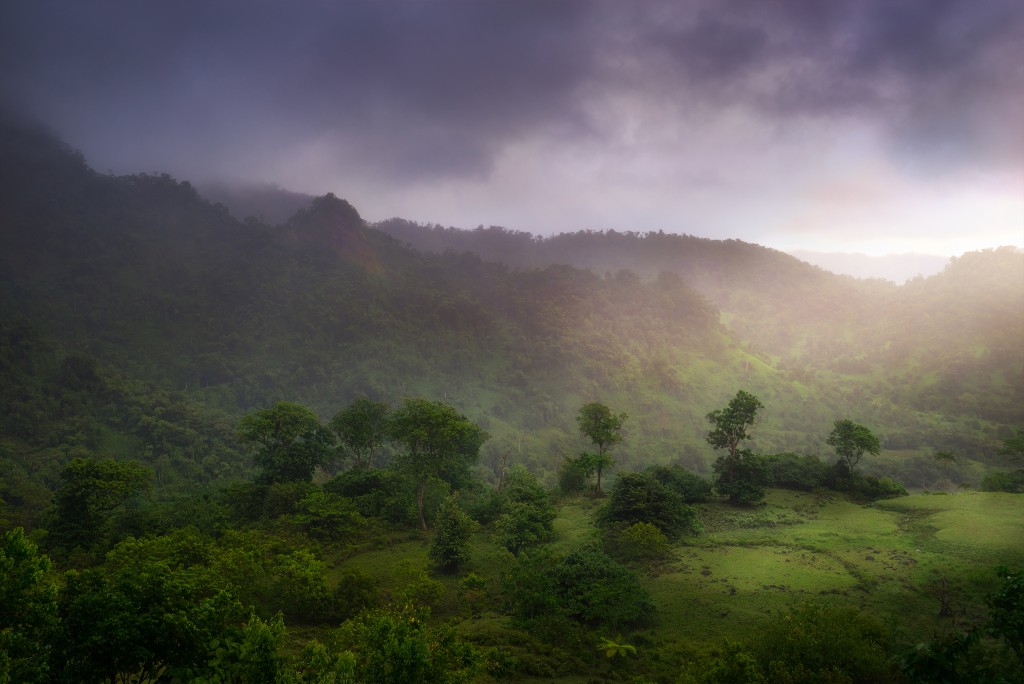
Returning to earth, we decide it is time to find what the island is made of — literally. On the central north coast of Savai’i, the village of Sale’aula stands on a field of barren lava. Between 1905 and 1911, eruptions of nearby Mt Matavanu sent lava flowing over 40 square kilometres of land, at depths of up to 120 metres. The lava covered all of Sale’aula, reaching as far as villages to the east. Although many villages in the path were destroyed, not a single person died because of the slow flow, which gave residents time to escape.
We come across the remains of a church, where the lava has flowed in and out, leaving the skeleton of the main framing. It is an eerie feeling to see parts of a place of worship ‘frozen’ in the process of being eaten alive by the earth. As I sit on the ground of hardened lava, the rock’s coldness seeps into my skin. I find it rather strange, knowing that this very spot was a fiery flow of liquid a century ago.
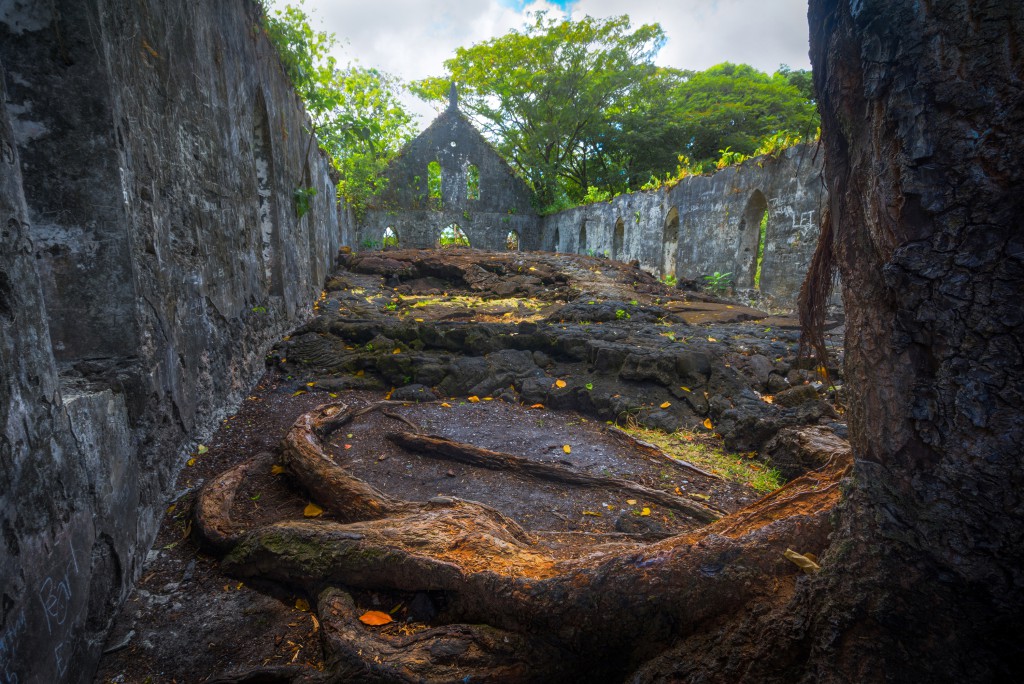
Back in Upolu, I perch on the crest of a waterfall, looking down over the cul-de-sac of a grand valley that’s covered in thick lush jungle: the perfect place for my pondering self to gather my thoughts about Samoa, the island of fire. The volcanoes on this very island — and dotted all over this beautiful Earth — are only a micro expression of a much larger fireball extravaganza, one that spans beyond the Earth itself, into deep time. From the Big Bang to the lava fields, fire is the giver of life, from which all things come.
